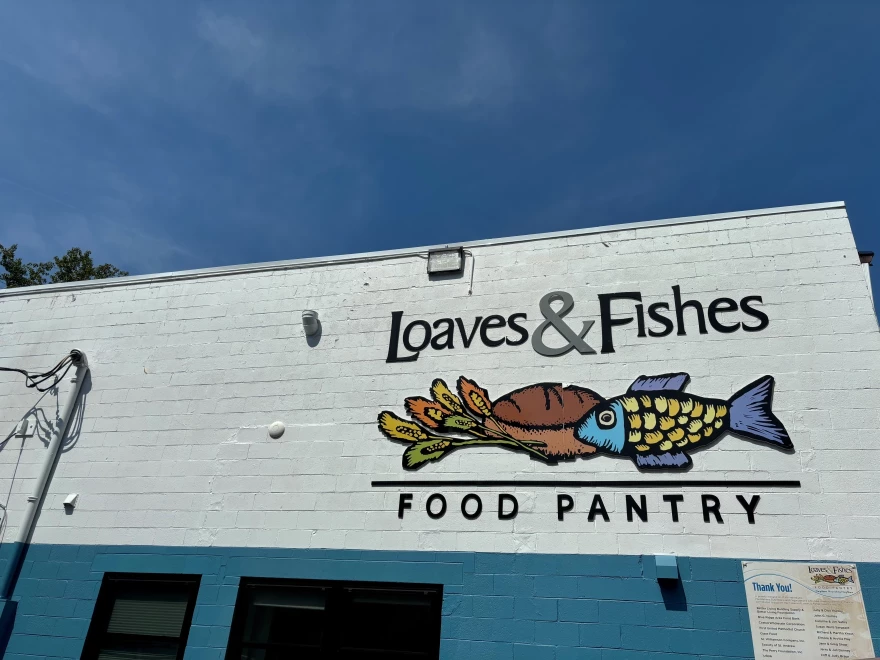Grocery costs increased again in 2024, compared with the previous year. And potential cuts to food benefits from Congress could strain food banks. WMRA’s Ayse Pirge reports.
Les Sinclair is the Blue Ridge Area Food Bank’s communications and PR manager. He says the upcoming federal Farm Bill, which includes many nutrition programs, is where such cuts would probably take place. The Farm Bill governs programs related to food and agricultural programs. The most recent one, the 2018 Farm Bill, has been extended through the end of September. But the House Agriculture Committee has been directed by Republican leadership to cut food aid programs by at least $230 billion through 2034. Those cuts would come largely or entirely from the Supplemental Nutrition Assistance Program, or SNAP.
Sinclair says the Farm Bill benefits not just farmers, but also people who are food insecure. Potential cuts to SNAP could have a dramatic impact on hunger relief organizations such as the Blue Ridge Area Food Bank, which serves a large portion of Virginia. Sinclair says that’s because SNAP provides nine meals for every one meal that the food bank network provides.

He says that even a 10% cut in SNAP programs could double the demand on the food banking network. And Sinclair says they’re already seeing increased demand – more than 170,000 people every month, on average. That’s an increase of more than 10% in average monthly visits since WMRA spoke with Sinclair last August.
SINCLAIR: So, if you couple that with just even a 10% cut in SNAP, that could really, really make... the hunger relief system unmanageable or untenable. I mean, that’s just something we couldn’t manage for very long.
There are other programs that are part of the Farm Bill. The Emergency Food Assistance Program, also known as TEFAP, is one of them. TEFAP provides emergency food assistance to the states to help them supplement the diets of those in need, through local food banks such as BRAFB.
SINCLAIR: So, that’s free food. And the alternative then is that we purchase food. We’re already purchasing more of that. Before the pandemic we spent about $1.8 million in buying food. And most current fiscal year, we spent over $5 million buying food. So, you can see the growth trajectory there on spending money for food. Additionally, food costs more and that’s a hinderance as well ... and so, those sorts of programs, if we had to eliminate the, or reduce the amount of free food, while the demand is increasing– it’s just a terrible time to do that.
Funding to help food banks in distributing TEFAP food was cut by about 13% in the last year, and it could be cut more in this year’s budget.

Jane Colony Mills is the executive director of Loaves & Fishes Food Pantry in Charlottesville. It’s a distribution partner of the Blue Ridge Area Food Bank. She says USDA aid paid for nearly a third of the food they gave out last year. Mills also says they don’t know if rising grocery prices will impact whether the pantry will keep getting help from local grocery stores. She says that if it costs more for the stores to buy food, they will likely try to sell it first before donating it to the pantry.
Sinclair predicts that food banks will receive less in donations in the future. That’s one of the reasons the Blue Ridge Area Food Bank is spending more money on food now. He points to increased efficiency in the grocery industry as a factor.
SINCLAIR: What we’re seeing is less waste with the food, with the grocery industry. ... They’re using machine learning and artificial intelligence to figure out what they need to sell, when. So ... the stuff that they would have in an overabundance and they might want to move off the shelf ... it’s becoming less and less over time.
He also points out that, regardless of the political situation, the demand on the hunger relief system continues to increase.
SINCLAIR: ... and that’s really important for people to understand because even though it seems like the economy is getting better, for many, many people and more and more people it seems like that it is not. And that’s a real challenge because it’s a bit of a dichotomy. ... What we’re seeing on our end in the Blue Ridge Area Food Bank network is that demand is increasing.
Sinclair also emphasizes that the organization will do its best to make sure that people have enough to eat. But that promise comes with the warning that cuts to government programs would really impact the availability of healthy food for those in need.


